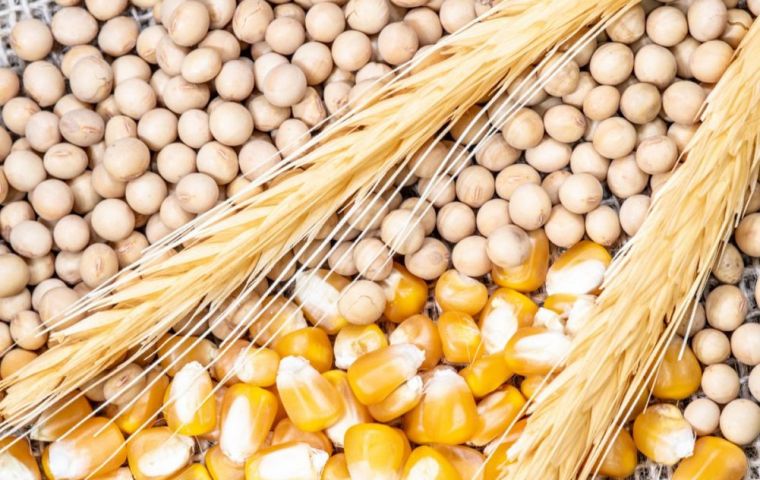MercoPress. South Atlantic News Agency
Food commodity prices increased for the third consecutive month in May
 The Cereal Price Index rose 6.3% from April, reflecting growing concerns about unfavorable crop conditions curbing yields for the 2024 harvests
The Cereal Price Index rose 6.3% from April, reflecting growing concerns about unfavorable crop conditions curbing yields for the 2024 harvests The benchmark for world food commodity prices increased for the third consecutive month in May, as higher prices of cereals and dairy products outweighed decreases in quotations for sugar and vegetable oils, the Food and Agriculture Organization of the United Nations (FAO) reported.
The FAO Food Price Index, which tracks monthly changes in the international prices of a set of globally-traded food commodities, averaged 120.4 points in May, up 0.9 percent from its revised April level, while it remained down 3.4 percent from its level a year ago and 24.9 percent below its March 2022 peak.
The FAO Cereal Price Index rose by 6.3 percent from April, powered higher by rising global wheat export prices, reflecting growing concerns about unfavorable crop conditions curbing yields for the 2024 harvests in major producing areas including parts of Northern America, Europe and the Black Sea region. Maize export prices also increased in May, pushed up by production concerns in both Argentina, due to the Spiroplasma disease (also known as corn stunt disease), and Brazil, due to unfavorable weather, as well as spillover effects from the wheat markets and limited selling activity in Ukraine. The FAO All-Rice Price Index rose by 1.3 percent in May.
The FAO Dairy Price Index increased by 1.8 percent from April, underpinned by increased demand from the retail and food services sectors ahead of the summer holidays as well as market expectations that milk production in Western Europe may fall below historical levels. Renewed import demand for spot supplies from some countries in the Near East and North Africa also lifted dairy prices.
The FAO Sugar Price Index, meanwhile, decreased by 7.5 percent from April, mainly driven by pressure from the good start of the new harvest season in Brazil. Lower international crude oil prices also exerted downward pressure on sugar prices, by lowering demand.
The FAO Vegetable Oil Price Index declined by 2.4 percent from April. Lower palm oil quotations due to seasonal output increases and ongoing weak global demand more than offset higher prices of soy oil, due to increasing demand from the bio-fuel sector, and firmer prices of rapeseed and sunflower oils due mainly to diminishing export availabilities in the Black Sea region.
The FAO Meat Price Index decreased marginally, by 0.2 percent, as international prices of poultry and bovine meats fell while those of pig and ovine meats increased.




Top Comments
Disclaimer & comment rulesCommenting for this story is now closed.
If you have a Facebook account, become a fan and comment on our Facebook Page!